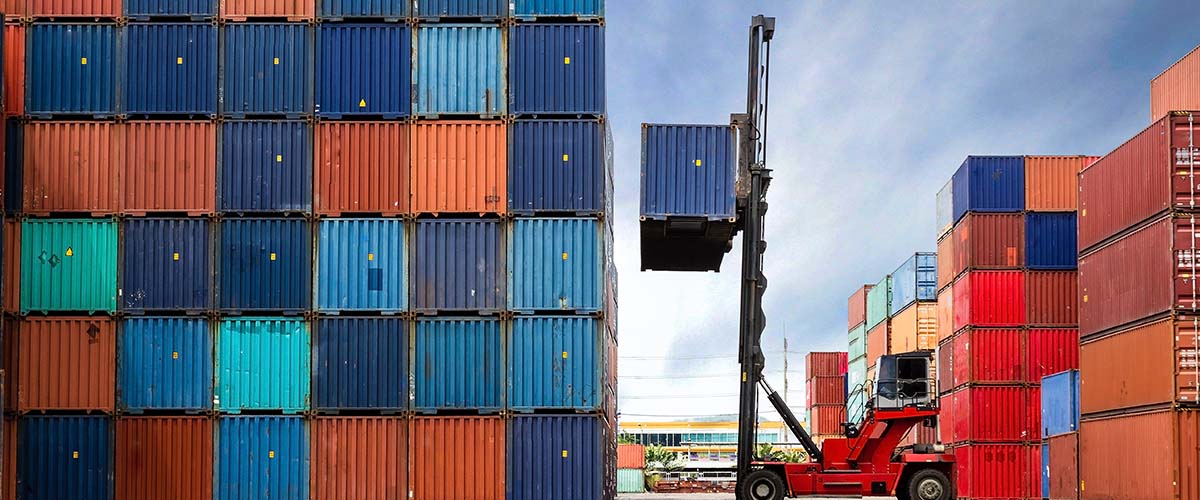Major ports across the globe are dealing with cargo pileups – and the problem doesn’t seem to be dissipating anytime soon.
From the Gulf of Mexico to China, there is an unprecedented number of ships waiting offshore to deliver goods. With more than 20 ships that were trapped off the coast of Georgia’s international port, there are most likely many businesses not receiving the supplies they need in a timely manner, creating delays and fueling the possibility of late payments. Trade credit insurance can help protect businesses in the event of a global supply chain disruption, such as this one.
Atradius’ Dave Culotta, Christian Mueller and Bob Wanuga provide insights into the current state of the Great Supply Chain Disruption.
How does a phenomenon like the backlog of shipping containers in Georgia happen?
CM: Quick answer: The perfect storm. The pandemic shut down factories in Asia or other places where manufacturing occurs. This has a ripple effect through the whole supply chain. Ports, shipping companies and truckers are all working on a tight timeline. If there is an interruption somewhere in the process, the whole system gets out of sync. When manufacturing started back up in Asia, shipping containers were filled, shipped and sent to U.S. ports as quickly as possible. Now, there is a backlog of ships arriving at ports and they are unable to handle it all at once, causing delays in the process. Consequently, shipping containers are piling up at the port, due to delays in land transportation.
Aside from the bottleneck happening in Georgia, what are the biggest challenges facing the supply chain nationwide?
CM: The supply chain has been trimmed down to a lean and “just in time” process. If one domino piece falls, it creates a ripple effect. This is a problem with no easy or quick solution, as it requires additional investment in infrastructure.
Get in Touch
Looking For a FREE Quote?
Obtaining a free Trade Credit Insurance quote or just some more information is fast and easy! Get in touch with us today.
Get Started Call 800-822-3223BW: Challenges are many and not just nationally. China has shut down ports due to Covid outbreaks and a low supply of truck drivers and power outages in low-cost nations are affecting supply manufacturing. Ships and shipping containers are in short supply, raising the cost of shipping. Energy process is high globally, raising costs across the board. Labor and staff in general has not fully returned to work.
DC: Aside from supply shortages, a byproduct of the current supply constraints is rising prices. The rise in price of raw materials and the lag in working through growing backlogs has created increased working capital requirements for many companies. The additional funding required has resulted in negotiating expanded lines of credit, alternative financing solutions and an increase in the use of trade credit insurance solutions.
Which sectors are impacted the most by supply chain bottlenecks and other disruptions globally?
CM: Essentially all sectors that are receiving goods from overseas and are not producing locally are impacted. Even if goods are produced locally, most of the time they are dependent on parts from overseas, so they are still affected by the bottleneck.
DC: Notably, delays in finished retail goods imported from overseas could impact retailer financial results in Q4, which is critical as it is the holiday season. But the auto industry has perhaps been the most publicly impacted by supply chain disruptions surrounding the semiconductor shortages.
Are there any supply chain trends or solutions emerging to combat these challenges?
CM: In general, the current situation is a wakeup call for companies to look at their supply chain. The focus will probably shift to cost-effective and sustainable solutions for securing continuous supply. We will probably see more diversification of the supply chain and the eye-opening heavy dependence on foreign supplies may lead to a shift to restarting production in the U.S.
DC: Unfortunately, the pandemic protocols at many manufacturing facilities around the world have delayed the ability for production volumes to ramp up as needed to better meet demand. While companies have adjusted manufacturing schedules, the availability of shipping containers, complex port logistics and the high prices of raw materials and component delays have left many companies without viable options for improving the speed of product delivery.
How has the market responded to the shipping delays and disruptions?
CM: A trend we have seen is larger companies with deeper financial pockets have started to charter their own container ships to ensure shipping capacity.
DC: Unfortunately, smaller industry players have seen increased shipping and logistics costs putting downward pressure on their bottom-line profitability. Those with sufficient financial resources and more diversified supply chains have generally fared better than their counterparts with liquidity challenges and significant supply chain concentrations. Companies are also anticipating larger lead times for products and ordering well in advance of actual need. While this may help to offset the supply chain challenges, it puts increased pressure on the accuracy of sales forecasts. Major U.S. ports are also reconsidering operational hours and shifts. Some market players have also considered re-routing supplies to alternative ports.
Are there any other significant risks that businesses should be aware of?
CM: The supply chain disruption is a headache for businesses and has increased costs for companies – which are usually passed on to the customer – further fueling concerns about a greater pace of inflation.
DC: A significant byproduct of the supply chain disruption is inflationary pressure. In addition, insufficient warehouse space is putting pressure on the supply chain and port operators as they manage increased inventories.
How can trade credit insurance provide protection against the risks posed by the Great Supply Chain Disruption?
CM: Trade credit insurance can mitigate the risk of payment delays and defaults for their clients, e.g., if the disruption in the supply chain has led to late payments or non-payments by their end-buyers.
BW: As global supply of essential goods and parts slows, payment slows, Days Sales Outstanding (DSO) increases and Accounts Receivable (AR) increases, creating liquidity issues for those unable to obtain goods to sell or manufacture. As liquidity weakens and slower payments arise, reliance on non-working capital and outside financing becomes more important. This also causes margins to decline and covenants on lending to be squeezed, as well as a decline of interest cover on debt. Therefore, credit insurance is a hedge against this type of default or nonpayment, providing a bit more peace of mind for businesses.
Dave Culotta is an Assistant Vice President and Senior Manager of U.S. Buyer Underwriting.
Christian Mueller is Vice President of Special Risk Management ~ Americas
Bob Wanuga is a Sr. Manager – Broker Gateway & Key Account Underwriter – North America.


